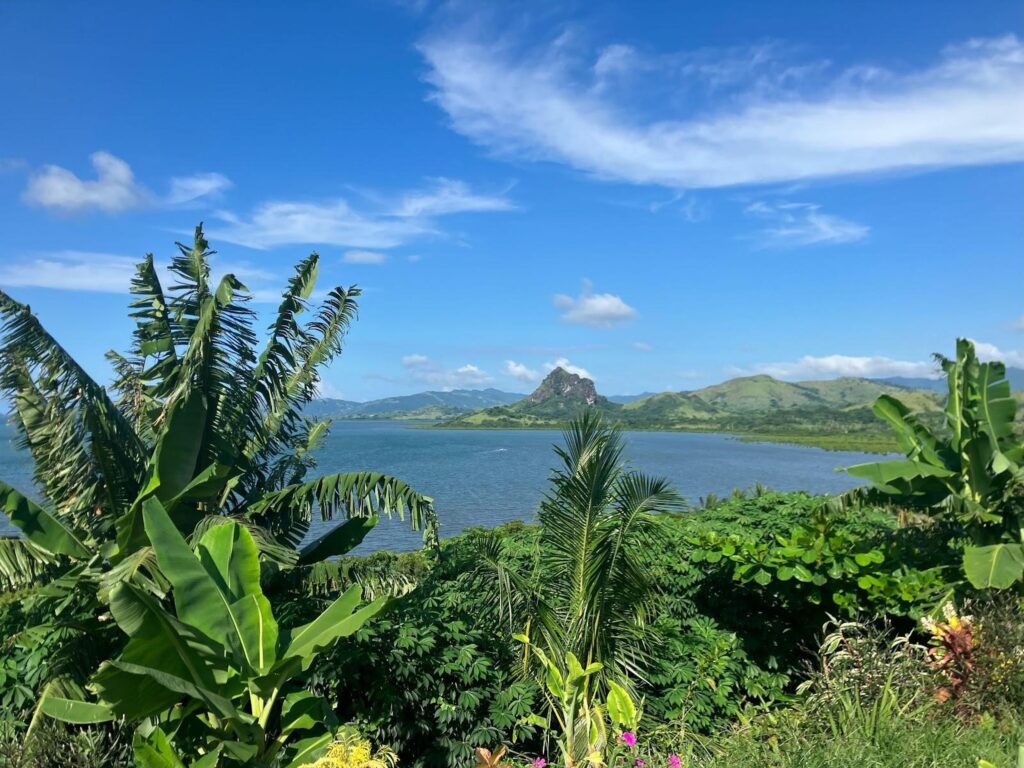Photo credit: Drake Kindred
By Drake Kindred, MIPP Graduate
To be honest, I knew very little about Fiji before arriving here, I merely knew of what Canadians interpret as bougie Fiji water, regional climate challenges, and their sugar cane industry. Knowing so little, it was an opportunity to broaden my horizons in a new hemisphere, new continent and ultimately a middle-income country with lots of opportunities and challenges. The plane rides from Toronto to Los Angeles, then to Nadi International on the West side of Fiji, and finally to Suva-Nausori International were the longest air travel experience I’ve ever had lasting about 28 hours in total including layovers. Arriving in Nadi at least felt somewhat familiar as a major tourist airport, but my experience immediately changed when I realized that to get on my next domestic flight I would have to exit the airport and enter a separate small building for my next domestic flight to Suva. Meanwhile, coming from the Canadian winter, I was still in the process of shedding the jackets I couldn’t fit in my luggage while sweating profusely in 30-degree heat.
Eventually, after a short 30-minute flight to Suva in a very comfortable and scented cabin, I arrived at a very small airport that looked nothing like Nadi. The luggage was all removed from the plane right in front of the passengers, and then placed on an outdoor conveyor belt which I had never seen before. I soon had my luggage and passed through a chain-link door to a group of very enthusiastic cab drivers. Soon after, I was driving for 40 minutes through a landscape that looked like nothing I’d ever seen, with a mix of shanty and modern infrastructure paired with lush rainforest. It was a sight to behold.
I soon arrived at my apartment/pool house where, due to issues with my new Digicel sim card, I was unable to contact my host. Most of the houses in Fiji have walls or gates around them so my method of getting in comprised of shouting from the street at 6am so my hosts could see and hear me to open the gate. The site I’m staying at is gorgeous, I have great hosts, a nice pool and a small apartment with a single burner induction stove paired with a microwave, mini fridge, but sadly no air conditioning. The oddest thing about my apartment is the shower which has an electrical outlet installed in the corner of its roof that plugs directly into the showerhead for hot water. Although likely completely illegal in Canada, it works well, and I haven’t been electrocuted yet!
Once I got settled, I set out for the nearest shopping area, which is referred to as Damodar City. All the commercial shopping areas/malls in Fiji are called ‘cities,’ while office-related buildings are referred to as ‘houses.’ For instance, the UNDP office is referred to as Kadavu house, which the taxi drivers seem to remember better than the UNDP building with a giant blue sign in front… but that’s a whole other issue. Regardless, shopping at Damodar City is a relative breeze. They have everything one could need to get set up, including a Digicel Phone outlet, two grocery stores, multiple ATMs and a bakery called the Hot Bread Kitchen, which sells sausage rolls and other pastries.
Over the next couple days, I got organized and finally arrived in downtown Suva for my first day of work at the UNDP office. The introductions at UNDP were very warm and friendly as everyone seemed curious as to where I was from, but soon I got settled into my team. Along with another JPC, I am part of the Resilience and Sustainable Development Department, but we work on different projects. All of my work is focused on the Governance for Resilient Development in the Pacific Project (Gov4Res) and its small grants initiative. I’ll say more about the project in my next blog post so stay tuned!
